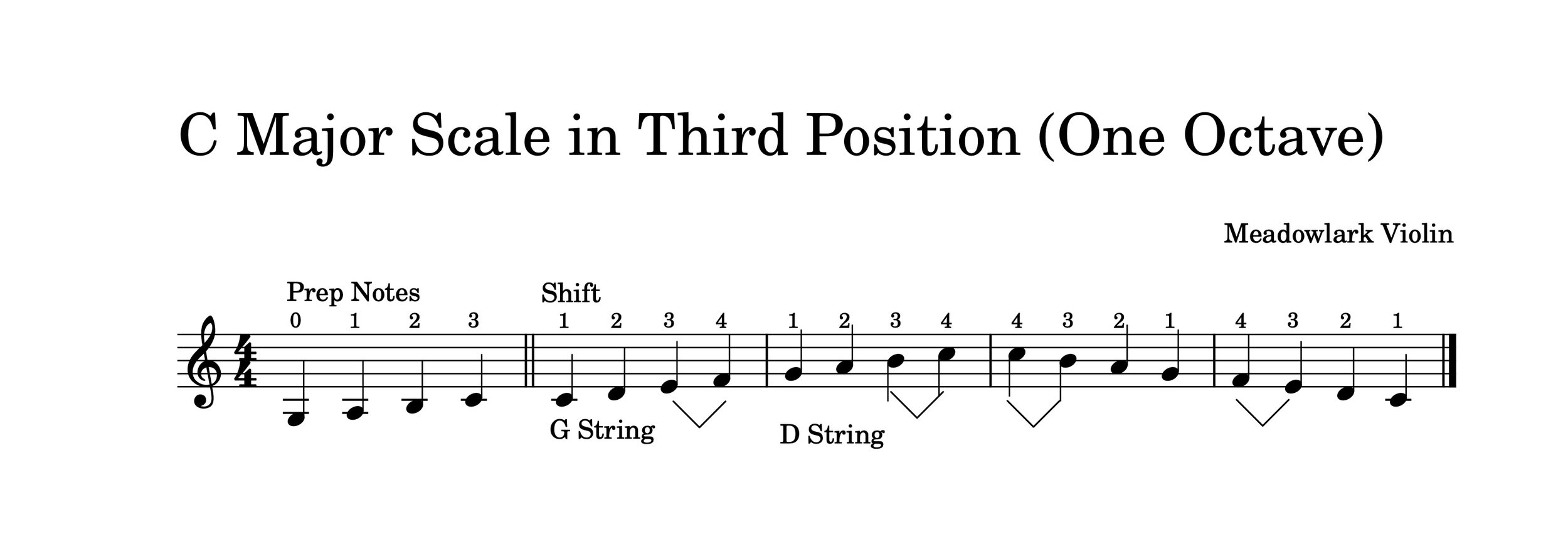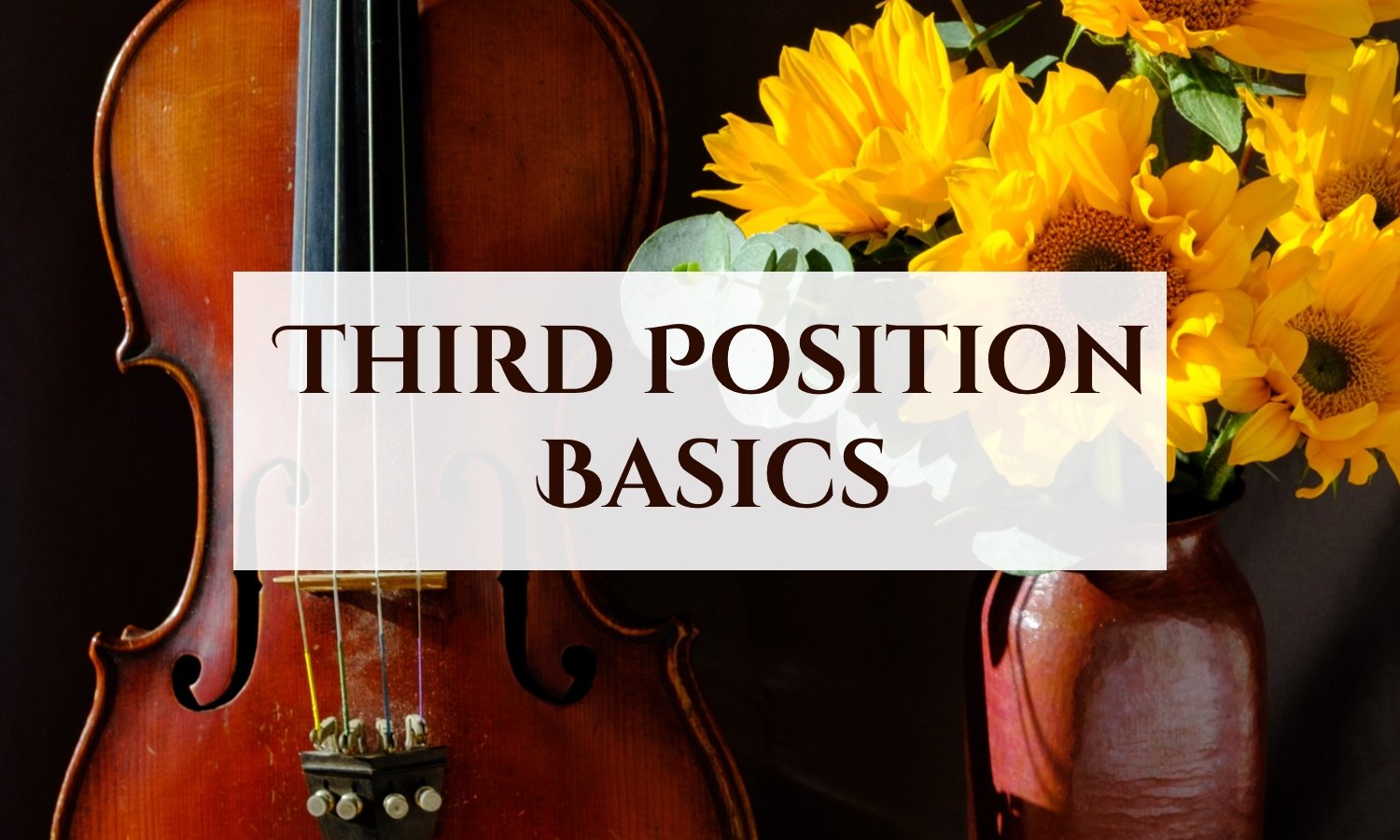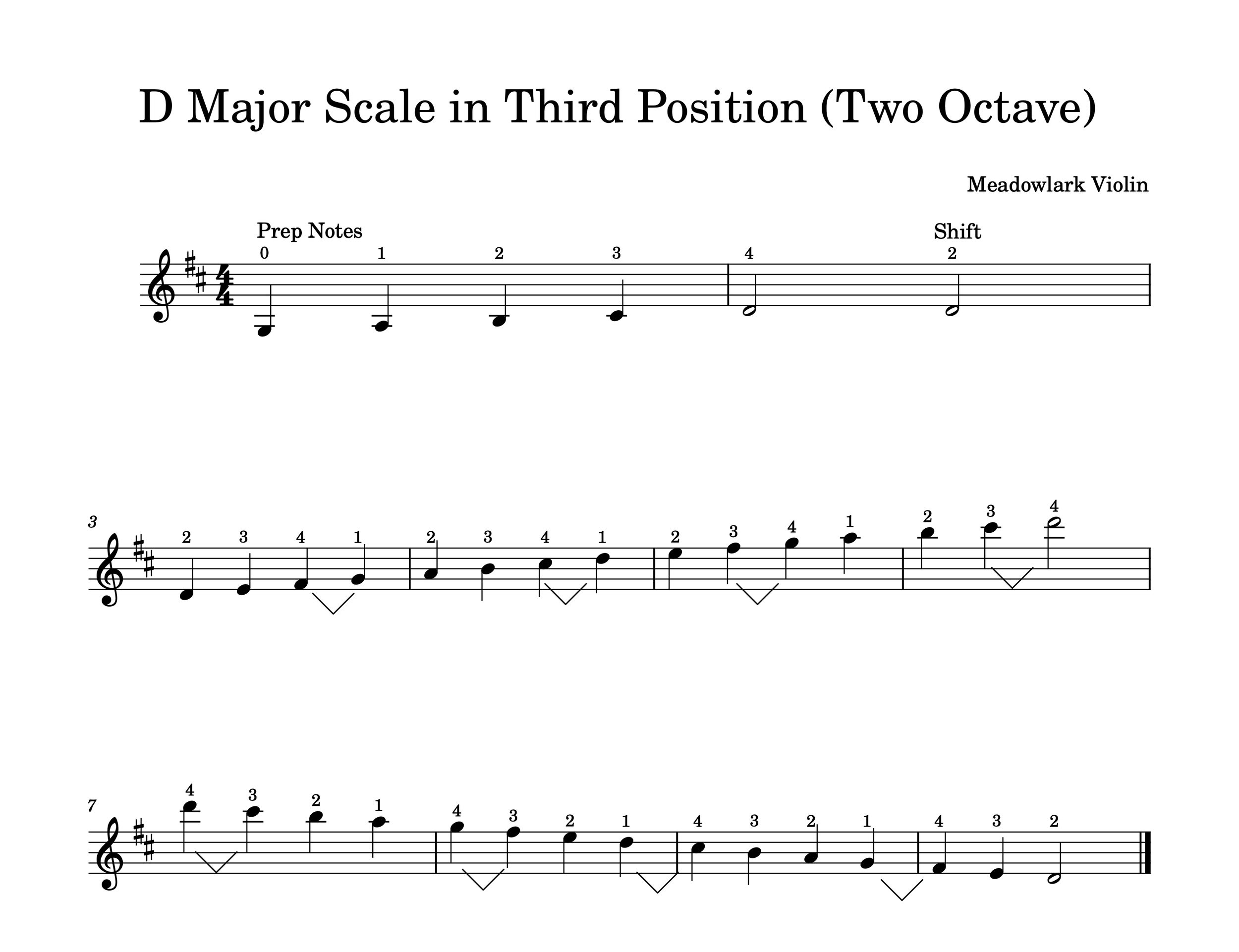Easy Scales in Third Position for the Violin
/If you are starting to learn third position then it’s time to start practicing third position scales on the violin. You’ll notice certain key signatures make more sense in certain positions. For instance, with first position scales on the violin, the keys of G, D, and A major make a lot of sense. In second position, the keys of B and F major seem to fit well. With third position scales on the violin, C major, G major, and D major feel very comfortable.
This is one reason why we generally teach third position on the violin after first position. Since first position favors most of the same key signatures, it makes sense to learn third position next.
Now if you’re not familiar with scale theory, learning third position scales might be pretty tricky. Don’t worry, if you need to brush up on how scales work, watch the following video for a quick overview. By the way, every violinist should know the half step patterns in scales. It will make the violin instantly make more sense! I talk about this in depth in my Creative Scales Course for the Experimental Violinist (part of my online studio).
Many people find third position difficult to learn, and I think that’s because they don’t truly understand the language of the violin. And if you don’t understand how to “speak the language” then learning advanced concepts like third position will always be a challenge. My Online Violin Studio has several courses that will help you “speak the language” like a native speaker!
Courses That Will Help You Learn Third Position
Let’s start off with the easiest one octave scales in third position.
Easy One Octave Third Position Violin Scales
C Major Scale in Third Position on the Violin
First off, let’s learn the C major scale in third position. Now if you know the universal scale finger pattern that I talk about in my violin third position course, this makes so much more sense! Basically, the universal finger pattern involves two strings with the same finger pattern on both strings. There will be a whole step between the first and second fingers, a whole step between the second and third fingers, and a half step between the third and fourth fingers. You can play this universal finger pattern pretty much anywhere on the violin (just don’t start on the E string) and you’ll get a scale.
Okay, on your violin fingerboard, start on the G string and let’s build our way up to third position. Play open string, then 1st, 2nd, and 3rd fingers. You should be on a C. Now replace that 3rd finger and put a 1st finger where the 3rd finger was. Tada! You’re in third position!
(P.S. It’s VERY important when you are starting to learn third position to always prep your notes. Start in first position and build up, then replace the notes. I go over this a lot in my course to make it easy to hear and understand.)
Now that you are up in third position, play that universal scale pattern up to 4th finger and the next string, then come back down and you’ve got an easy C major scale in third position!
By the way, those little arrows mean half steps!
Easy G Major Violin Scale in Third Position
Next is a one octave G major scale in third position and the good news is that it’s just like the C major scale you just played, only it starts on the D string instead. So remember, prep your notes in first position, replace the third finger with the first finger and you’re ready to play the G major scale in third position.
Easy D Major Violin Scale in Third Position
Next up is the D major scale in third position and yep, you guessed it. It has the exact same finger pattern as the C and G scales. See what I mean about knowing that universal scale finger pattern? It really shows up all over the violin fingerboard. The fun thing with the D major scale in third position is that you will gain two notes that you didn’t have down in first position. Those two high notes are C sharp and D.
Ready to Master Third Position?
I’ll teach you how! Click below to learn more.
Two Octave Violin Scales in Third Position
Two Octave C Major Scale in Third Position
Now that you’ve learned the first octave of the C major scale in third position, let’s learn the second octave! If you remember that your half step pairs in the key of C major are between B and C and in between E and F, then you’ll realize why you change finger patterns for the A and E strings. On the A and E strings, your 2nd and 3rd fingers will touch. Just go up to the third finger on the E string (the C) then go back down.
Two Octave D Major Scale in Third Position
You’ve already learned the higher octave of the D major third position scale, so now let’s learn the lower octave. The bottom octave is a little bit trickier. It starts on 2nd finger on the G string, so build up to 4th finger D in first position, then replace the 4th finger with the 2nd finger (test it against your open D to make sure it’s in tune). Now you’re ready to play the scale, but remember, D major has two sharps, C sharp and F sharp. That means those 4th finger on the G and D strings in third position are going to be sharp which means you are going to have to stretch for them!
Those scales are the easiest violin scales in third position. If you’re ready to learn more about third position, my Third Position course will show you all the tips and tricks to master third position that you NEVER learn in private lessons. Click here to learn more!
Happy Practicing!






















